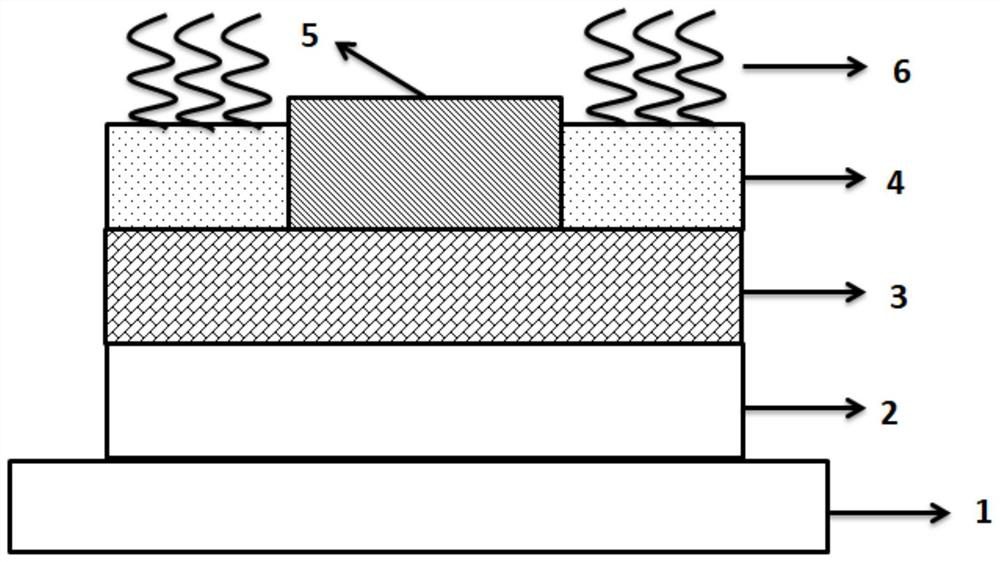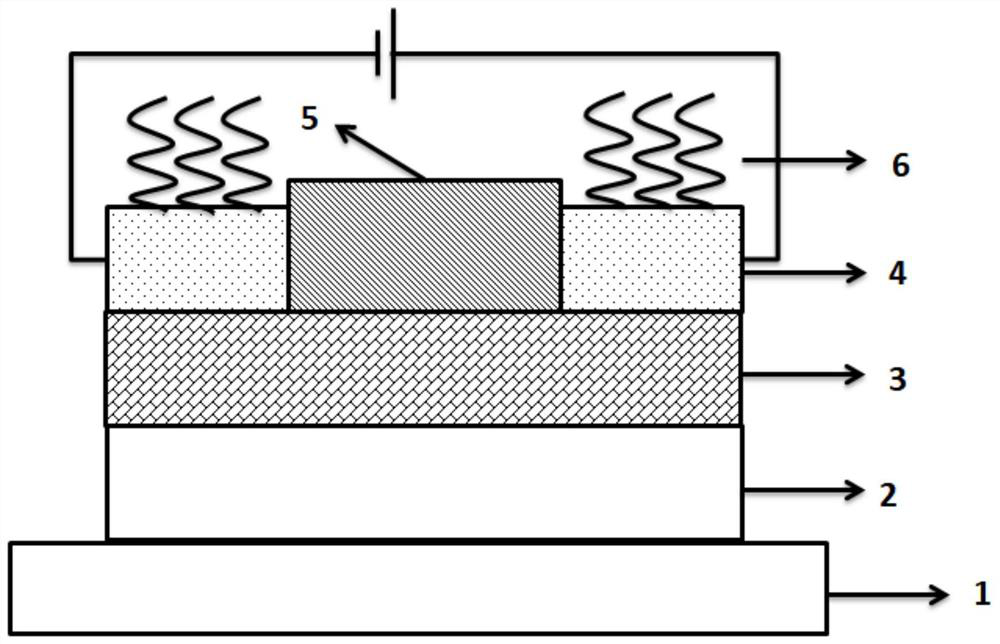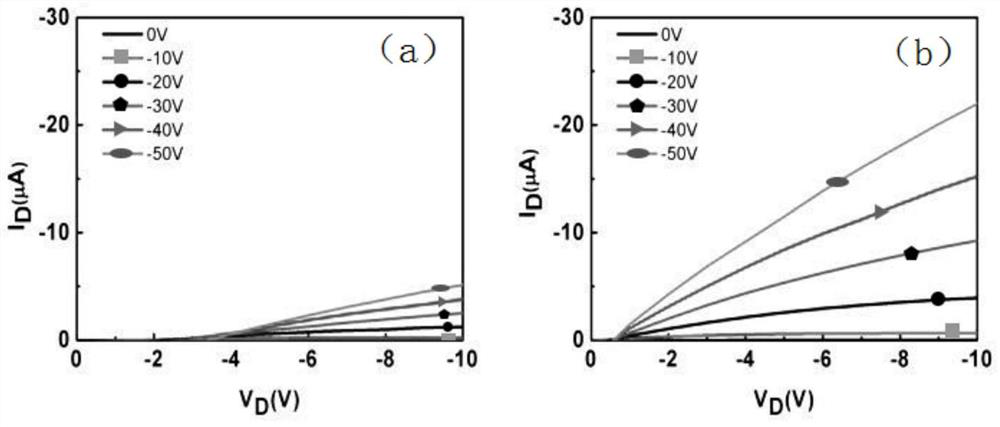DNA sensor based on thin film transistor and preparation method thereof
A technology of thin-film transistors and sensors, applied in the field of DNA sensors, can solve the problems of reducing sensitivity, reducing the stability and repeatability of DNA sensors, etc., and achieve the goal of improving sensitivity, enhancing saturation current and carrier mobility, and eliminating the labeling process Effect
- Summary
- Abstract
- Description
- Claims
- Application Information
AI Technical Summary
Problems solved by technology
Method used
Image
Examples
Embodiment 1
[0038] The structure of a thin-film transistor-based DNA sensor such as figure 1 As shown, the DNA sensor is composed of a recognition element and a transducer, and the DNA molecular probe 6 is used as the recognition element, and the DNA molecular probe 6 is solidified on the surface of the source-drain electrode 4 by means of adsorption, bonding, self-assembly, etc.; The transducer uses a thin film transistor, and the function of the transducer is to convert the signal sensed by the identification element into other recordable signals, such as mass change, frequency change, magnetic signal, fluorescent signal, electrical signal and acoustic wave signal. The DNA sensor is sequentially connected by the substrate substrate 1, the gate electrode 2, and the insulating layer 3, and then the source-drain electrode 4 is prepared on the insulating layer 3, and the DNA molecular probe 6 is fixed on the source-drain electrode 4, and finally the source-drain electrode 4 A semiconductor ...
Embodiment 2
[0050] The structure of the DNA sensor in this embodiment is basically the same as in Embodiment 1, the difference is that:
[0051] In this example, see Figure 5 , which is sequentially connected by the substrate substrate 1, the gate electrode 2, the insulating layer 3, and the semiconductor layer 5, and then the source-drain electrode 4 is made on the semiconductor layer 5 to form a bottom-gate-top contact structure, and finally on the source-drain electrode 4 Immobilized DNA molecular probes.
[0052] The specific preparation method of each structural layer of the thin film transistor in this embodiment is as follows:
[0053] 1) Select a heavily doped silicon wafer as the substrate 1 and the gate electrode 2. The conductivity of the silicon wafer is 0.01-0.15 Ω·cm, and the substrate 1 is ultrasonically cleaned with acetone and ethanol for fifteen minutes; Rinse with the corresponding solvent when taking it out to remove the adhered debris;
[0054] 2) Thermally oxidiz...
Embodiment 3
[0067] A DNA sensor based on a thin film transistor, the DNA sensor includes a thin film transistor and a DNA molecular probe 6, the thin film transistor includes a substrate substrate 1, a gate electrode 2, an insulating layer 3, source and drain electrodes 4 and a semiconductor layer 5, the substrate substrate 1. The gate electrode 2 and the insulating layer 3 are arranged sequentially from bottom to top, the semiconductor layer 5 is arranged on the insulating layer 3 , the source and drain electrodes 4 are in contact with the semiconductor layer 5 , and the DNA molecular probe 6 is fixed on the source and drain electrodes 4 .
[0068] Wherein, both the source and drain electrodes 4 and the semiconductor layer 5 are disposed on the insulating layer 3 , and the semiconductor layer 5 is located in the channel of the source and drain electrodes 4 .
[0069] Substrate The material of the substrate 1 is an insulating material, or a composite material formed by covering the surface...
PUM
 Login to View More
Login to View More Abstract
Description
Claims
Application Information
 Login to View More
Login to View More - Generate Ideas
- Intellectual Property
- Life Sciences
- Materials
- Tech Scout
- Unparalleled Data Quality
- Higher Quality Content
- 60% Fewer Hallucinations
Browse by: Latest US Patents, China's latest patents, Technical Efficacy Thesaurus, Application Domain, Technology Topic, Popular Technical Reports.
© 2025 PatSnap. All rights reserved.Legal|Privacy policy|Modern Slavery Act Transparency Statement|Sitemap|About US| Contact US: help@patsnap.com



